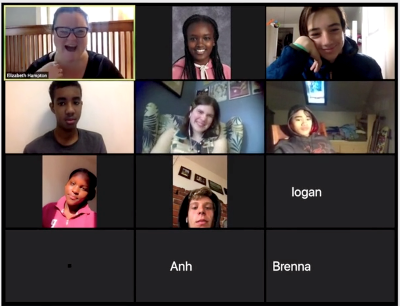Here’s what we know: Implementing a comprehensive, standards-aligned curriculum is a complex undertaking, even in a typical, in-person classroom. There are new pedagogical approaches to consider, texts and topics to unpack, instructional shifts to practice, academic routines to introduce, and the list goes on. This year, as schools across the country were forced to adjust to virtual learning, professional learning and curriculum organizations like EL Education learned how to reimagine curriculum implementation designed for in-person learning.
Technical Change: Essential Lesson Elements
In response to the need for virtual and hybrid iterations of the EL Education K-8 Language Arts curriculum for partners across the country, EL Education designed the Flex Curriculum, which provides adapted online lesson-by-lesson guidance, assessment recommendations, and additional resources in digital format. By honing in on the lesson elements essential for synchronous learning and those most effective for asynchronous time, the Flex resources have eased the transition to hybrid and virtual instruction. But beyond orienting to and navigating new Learning Management Systems and new platforms for instruction, teachers and their students are adapting to new social norms in virtual teaching and learning that have significant implications for professional learning (PL).
Adaptive Change: Responsive Professional Learning in Oakland Unified School District (OUSD)
Pre-pandemic, EL Education’s curriculum-aligned professional learning focused first on developing teachers’ knowledge of the curriculum, because data shows that layered and nuanced understanding of the curriculum leads to substantive instructional shifts, differentiated instruction, ever-increasing student engagement, and ultimately, improved student outcomes. That was the original intent of our work with OUSD in grades 6-8 through our Gates Foundation Professional Learning Partnership grant, which also includes Leading Educators as a partner. But within weeks of the shift to virtual instruction, teachers began seeking support in balancing the challenge of the curriculum with much-needed joy in their virtual classrooms. Jeannie Bruland, Secondary Literacy Coordinator in OUSD’s Department of Academics & Innovation reflects, “As we visited classrooms with coaches, it was apparent that teachers needed strategies to move toward the kind of engagement and participation that had been part of the in-person classroom. Because the PL materials were not designed for distance learning, we felt it was important to explore how to apply the concepts and research in a new way.” Coaches proposed resequencing PL topics to prioritize space for connection, engagement, and student ownership of learning. Drawing on EL Education’s deep expertise in these areas, we were able to redesign PL quickly in response.
At the Center: Evidence of Equity
We know that student data will look different this year, with some states suspending standardized tests and others planning to move forward with testing. And there is opportunity in the space that a lack of standardized testing—or a lack of valid and reliable test data—will leave. In this space, we have more influence over holding equity at the center of teaching and learning. We can focus on formative, curriculum-embedded assessments that give us contextual information about individual students. We can focus on empirical data from virtual walkthroughs that enable real-time conversations with teachers. To better understand how equity lives in these new instructional spaces, EL Education has updated our K-8 curriculum walkthrough tool to ensure indicators: 1) work across in-person, hybrid, and virtual settings; and 2) attend explicitly to issues of equity. Data gathered between baseline and mid-year in the Gates Foundation partner schools suggest early improvements in student engagement aligned with our responsive professional learning pathway.
Yet, at the same time, there are increased equity challenges around student access to technology, family responsibilities, and supportive conditions for learning. Concepts like “attendance” and “participation” have new meanings in virtual contexts. Bruland notes, “While understanding individual students has always been important, at this time it’s even more critical that teachers and school staff look at the barriers and opportunities for each student, and identify the path that will best support their learning.” And so, in OUSD, data will continue to inform our approach to PL and remind us that we must constantly interrogate what we think we know about teaching and learning. We must continue to ask: What is this new—if temporary—order teaching us as curriculum and professional learning organizations about equity in instruction, engagement, opportunity, and access? What must we leave behind, and what will we carry forward?

Rebecca Stanko works with professional learning organizations and districts implementing the EL Education curriculum to increase access to high-quality, curriculum-aligned professional learning in service of excellent and equitable outcomes for students nationwide.
EL Education is a leading K-12 nonprofit empowering teachers to transform schools in diverse communities across America. For more than 25 years, EL Education has brought to life a three dimensional vision of student achievement that includes mastery of knowledge and skills, character, and high-quality student work. By promoting active classrooms that are alive with discovery, problem solving, challenge, and collaboration, EL Education’s curriculum inspires teachers to fulfill their highest aspirations and motivates students to achieve more than they think possible.



